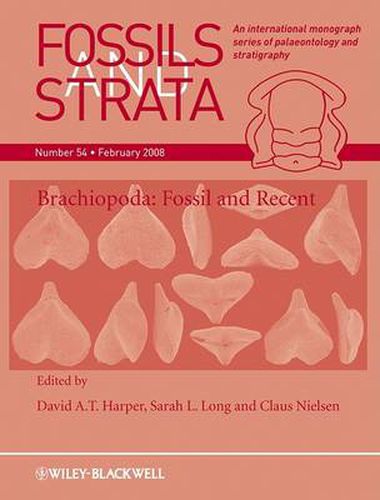Readings Newsletter
Become a Readings Member to make your shopping experience even easier.
Sign in or sign up for free!
You’re not far away from qualifying for FREE standard shipping within Australia
You’ve qualified for FREE standard shipping within Australia
The cart is loading…






This substantial volume showcases 35 of the presentations delivered at the 5th International Brachiopod Congress in Copenhagen. The brachiopod congresses are a focus for cutting-edge research in brachiopod palaeontology and neontology. The presentations from the Copenhagen Congress cover a wide range of material from basic morphology and taxonomy through advances in molecular phylogeny and ultrastructural studies to the biogeography and palaeoecology of the phylum. About 75 per cent of the papers relate to fossil brachiopods and the rest to living forms. The following fields are represented in the volume: Taxonomy/Morphology (25 per cent), Ecology/Palaeoecology (35 per cent) and Stratigraphy/Biogeography (20 per cent), phylogeny (10 per cent) and Biochemistry/Genetics (10 per cent). The volume is beautifully illustrated throughout and the papers together represent an exciting snapshot of contemporary brachiopod research as it continues into the third millennium.
$9.00 standard shipping within Australia
FREE standard shipping within Australia for orders over $100.00
Express & International shipping calculated at checkout
This substantial volume showcases 35 of the presentations delivered at the 5th International Brachiopod Congress in Copenhagen. The brachiopod congresses are a focus for cutting-edge research in brachiopod palaeontology and neontology. The presentations from the Copenhagen Congress cover a wide range of material from basic morphology and taxonomy through advances in molecular phylogeny and ultrastructural studies to the biogeography and palaeoecology of the phylum. About 75 per cent of the papers relate to fossil brachiopods and the rest to living forms. The following fields are represented in the volume: Taxonomy/Morphology (25 per cent), Ecology/Palaeoecology (35 per cent) and Stratigraphy/Biogeography (20 per cent), phylogeny (10 per cent) and Biochemistry/Genetics (10 per cent). The volume is beautifully illustrated throughout and the papers together represent an exciting snapshot of contemporary brachiopod research as it continues into the third millennium.